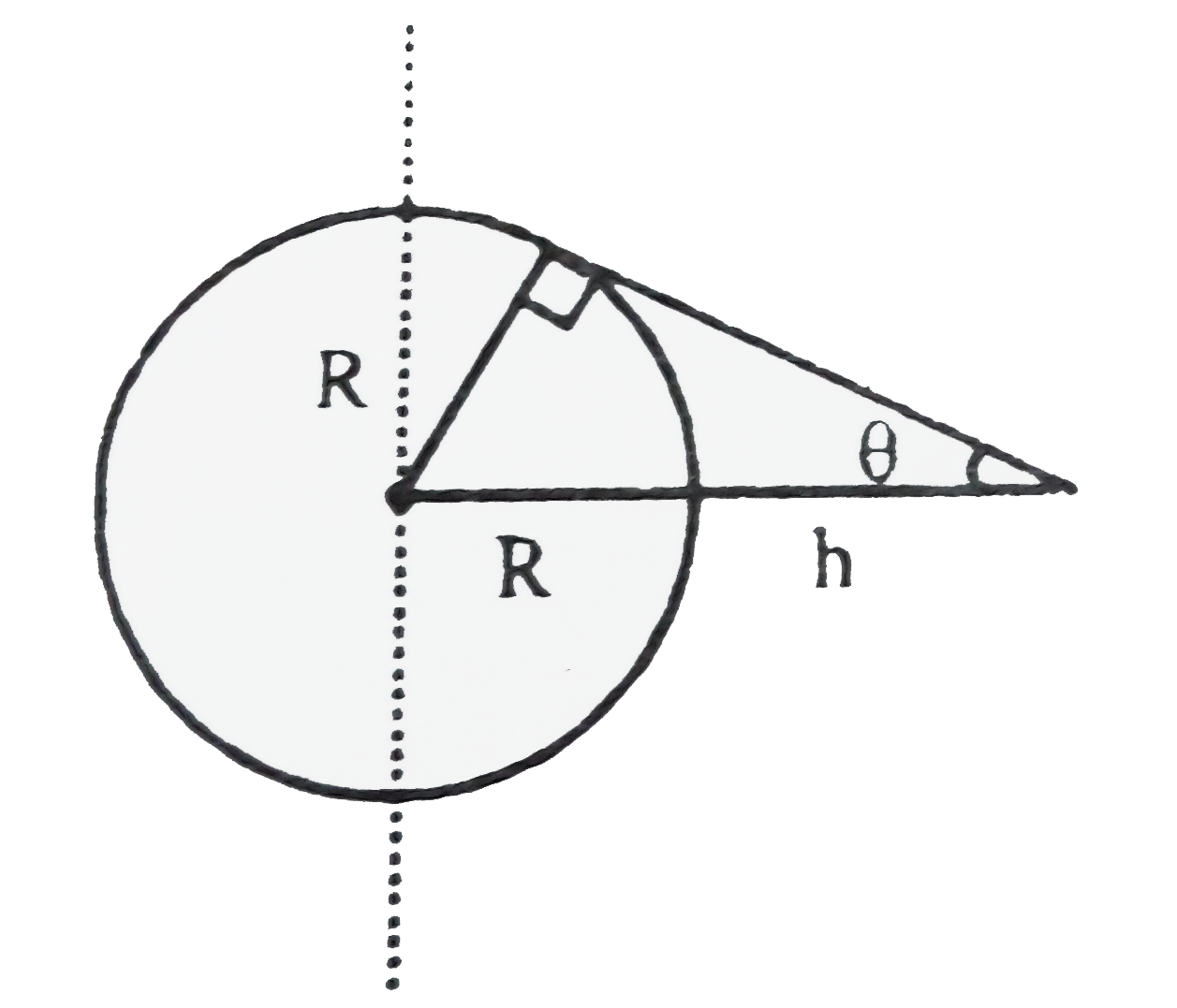A near surface earth satellite is in the shape of a sphere of radius r. It encounters cosmic dust in its path. The viscous force experienced by the satellite follows stoke’s law. The coefficient of viscosity is η. Mass and radius of the earth are M and R respectively. (a) Calculate the power of the rocket engine that must be put on to keep the satellite moving as usual. (b) Calculate the equilibrium temperature of the surface of the satellite assuming that it radiates like a black body and no outer radiation falls on it. Assume that the heat generated due to viscous force is absorbed completely by the satellite body.
The correct Answer is:(a) 6πGMeterR (b) [3ηGM2σrR]
Step by step video, text & image solution for A near surface earth satellite is in the shape of a sphere of radius r. It encounters cosmic dust in its path. The viscous force experienced by the satellite follows stoke’s law. The coefficient of viscosity is eta. Mass and radius of the earth are M and R respectively. (a) Calculate the power of the rocket engine that must be put on to keep the satellite moving as usual. (b) Calculate the equilibrium temperature of the surface of the satellite assuming that it radiates like a black body and no outer radiation falls on it. Assume that the heat generated due to viscous force is absorbed completely by the satellite body. by Physics experts to help you in doubts & scoring excellent marks in Class 11 exams.
Updated on:21/07/2023Topper's Solved these Questions
Similar Questions
A geostationary satellite is orbiting the earth at a height of 6R above the surface of the earth, where R is the radius of the earth. The time period of another satellite at a height of 2.5 R from the surface of the earth is …… hours.
View SolutionA geostationary satellite is orbiting the earth at a height of 5R above the surface of the earth, R being the radius of the earth. The time period of another satellite in hours at a height of 2R form the surface of the earth is
View Solution
Knowledge Check
A satellite is orbiting the earth in a circular orbit of radius r. Its
Akinetic energy veries as rBangular momentum varies as r−1Clinear momentum varies as r2Dfrequency of revolution varies as r−3/2A geostationary satellite is at a height h above the surface of earth. If earth radius is R-
 AThe minimum colatitude on earth upto which the satellite can be used for communication is sin−1(R/R+h)BThe maximum colatitudes on earth upto which the satellite can be used for communication is sin−1(R/R+h)CThe area on earth escaped from this satellite is given as (2πR2(1+sinθ))DThe area on earth escaped from this satellite is given as (2πR2(1+cosθ)
AThe minimum colatitude on earth upto which the satellite can be used for communication is sin−1(R/R+h)BThe maximum colatitudes on earth upto which the satellite can be used for communication is sin−1(R/R+h)CThe area on earth escaped from this satellite is given as (2πR2(1+sinθ))DThe area on earth escaped from this satellite is given as (2πR2(1+cosθ)A satellite of mass m is Launched from the earth's surface in a circular orbit. If M and R denote the mas and radius of the earth respectively, then the total energy of the satellite at an altitude 2R is
AGMm6RBGMm3RCGMm2RDGMm6R
If a satellite is moving around thee earth in an orbit of 5 R radius , here R = radius of the earth . The minimum kinetic energy required to be provided to the satellite such that it escapes the gravitational field of the earth is ( M and m are masses of earth and satellite respectively )
View SolutionA satellite of a mass m orbits the earth at a hight h above the surface of the earth. How much energy must be expended to rocket the satellite out of earth's gravitational influence? (where ME and RE be mass and radius of the earth respectively)
View SolutionA satellite is revolving in circular orbit of radius r around the earth of mass M. Time of revolution of satellite is
View SolutionA geostationary satellite is orbiting the earth at a height of 6R above the surface of the earth, where R is the radius of the earth. What is the time period of another satellite orbiting at a height of 2.5 R from the surface of the earth ?
View SolutionThe period of a satellite moving very close to the surface of the earth of radius R is 84 minute. What will be the period of the same satellite, if is is taken at a distance of 3R from the surface of the earth ?
View Solution
